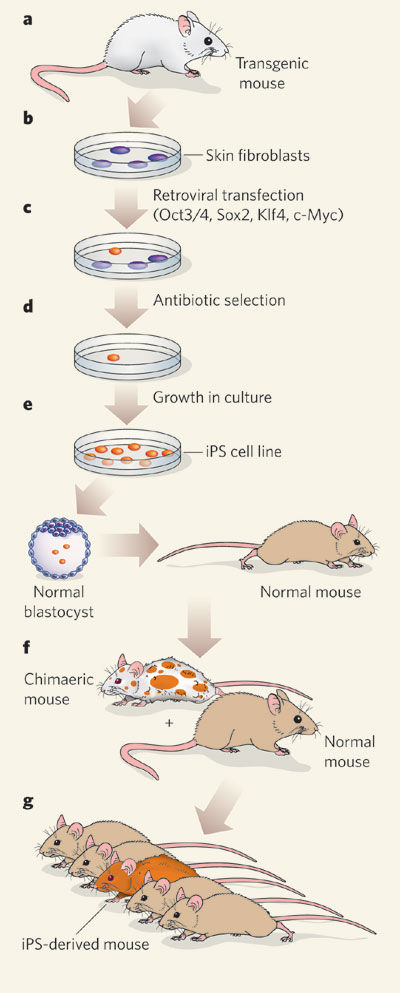Generating induced pluripotent stem cells
Keywords
Flag Inappropriate
Delete Content

Generating induced pluripotent stem cells
(A) To turn adult skin fibroblasts into embryonic stem cells, researchers generated mice that carried a drug-selectable marker conferring resistance to either neomycin or puromycin. Resistance to these antibiotics was linked to expression of either Pou5f1 or Nanog, which are markers of pluripotency. (B) The authors then isolated fibroblasts from these genetically modified mice and (C) introduced genes for four transcription factors (Oct3/4, Sox2, Klf4 and c-Myc) into these cells by retroviral transfection. (D) The transfected cells were subjected to appropriate drug selection. Cells that did not express the gene for drug resistance (i.e., Pou5f1 or Nanog) died. (E) Thus, rare colonies that resembled embryonic stem cells were isolated, and expanded into stable induced pluripotent stem (iPS)-cell lines. (F) When injected into blastocysts of normal mice, iPS cells could contribute to all cell types of the body, including the germ line. (G) When the chimaeric animals resulting from these blastocysts were crossed with normal mice, this led either to the birth of live offspring carrying the genetic content of an iPS cell or to development to the embryo stage.
This image is linked to the following Scitable pages:
How are induced pluripotent stem (iPS) cells different from embryonic stem (ES) cells? What can we use iPS cells for?





















Comments
CloseComments
Please Post Your Comment